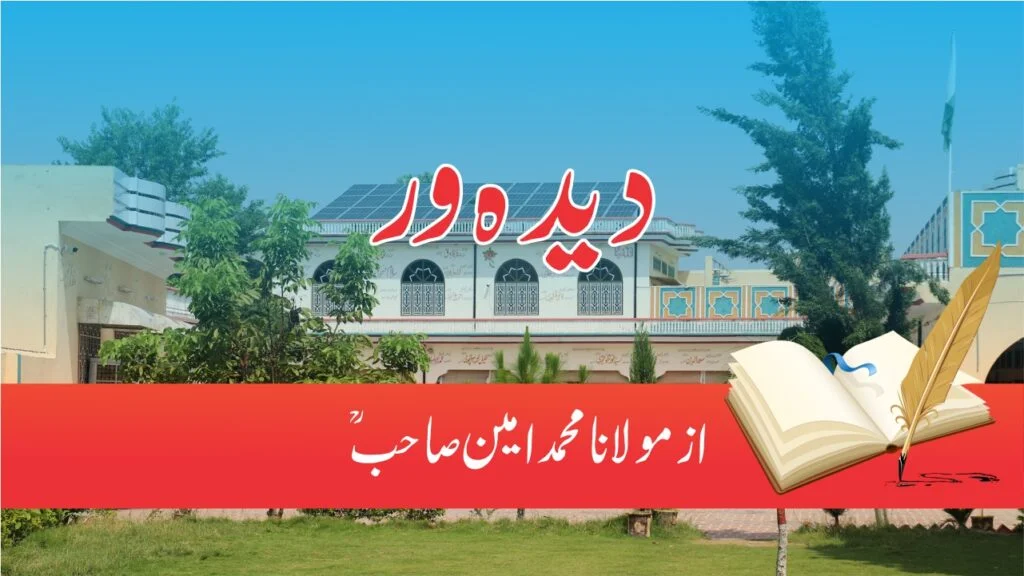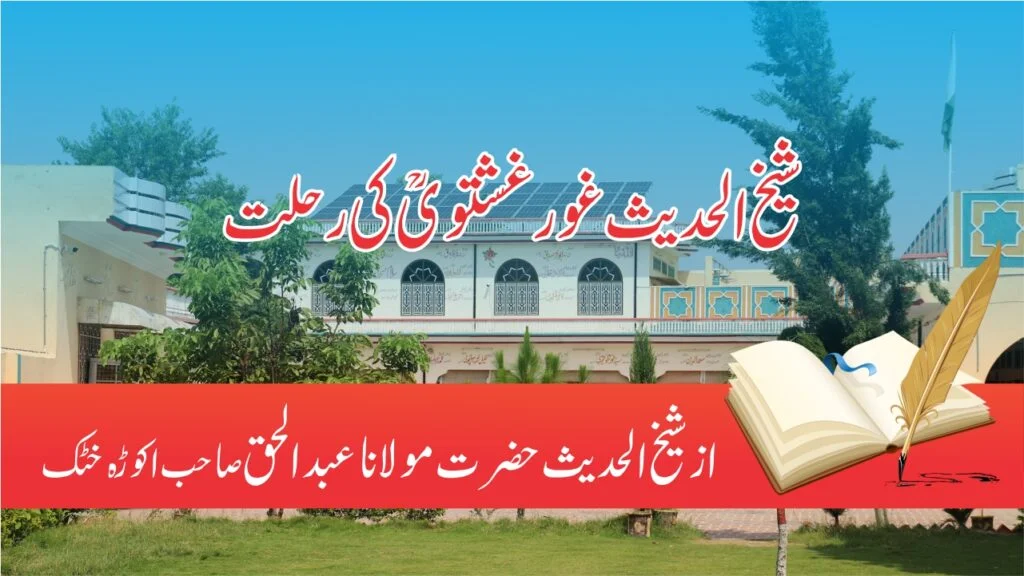How can a person as insignificant as me dare to write about the blessed life of the great Shaykh Al-Hadith Ghorghushti (RA), a figure well-known not only in the region of Chach, District Campbellpur (now Attock), but throughout the country? The magazine “Tarjuman-e-Islam,” which represents the Jamiat Ulama-e-Islam of Pakistan, is publishing a special edition about him. At the insistence of the editor, I humbly contribute a few lines to be counted among his admirers and followers.
Introduction to Shaykh Al-Hadith Ghorghushti (RA)
Although Shaykh Al-Hadith Ghorghushti (RA) was already renowned across the country, my personal acquaintance and the opportunity to benefit from his teachings came through attending the Jamiat Ulema-e-Islam’s gatherings in Chach.
At that time, Chach was a center of knowledge and action. The president of the Jamiat Ulema-e-Islam in the area was Maulana Muhammad Umar from Vessa, Campbellpur, and the secretary was Maulana Habib ur Rehman from the same village. All the Ulema of Chach were either muftis, members, or supporters of the Jamiat. Sheikh-ul-Hadith was their spiritual guide and always present at their gatherings, whether religious or political.
About 35 years ago, around 1389 AH, I first saw the revered Shaykh at these gatherings. I used to deliver speeches in Pashto, which Shaykh Al-Hadith appreciated greatly. He was pleased when Pashto-speaking people were addressed in their own language. His kindness and attention towards me grew, and along with his external blessings, he offered spiritual support and prayers, especially encouraging me in my efforts against Qadianism, atheism, and British colonialism.
A Close Connection
My bond with Shaykh Al-Hadith Ghorghushti (RA) became so strong that had I not already been initiated (bay’ah) by Hazrat Maulana Muhammad Abdullah of Kandia Sharif, the successor of Hazrat Abu Saeed Ahmad Khan, I would have certainly become his disciple. However, both of these spiritual paths led to the same source — Hazrat Khwaja Sirajuddin of Musa Zai Sharif. Shaykh Al-Hadith Ghorghushti was a disciple of Hazrat Sheikh Maulana Hussain Ahmad from Wah Bachran, District Mianwali, who, according to Hazrat Maulana Ahmad Ali Lahori, was one of the great saints of Punjab.
Shaykh Al-Hadith’s Spirit of Jihad
Shaykh Al-Hadith was a master of both outward and inward knowledge. In the eyes of the public, he was a highly learned scholar. To his students, he was a superior teacher and an outstanding Sheikh-ul-Hadith. However, despite his scholarly pursuits, the spirit of jihad dominated his life. When the time came to face any falsehood, he would always be the first to step forward.
During the 1953 movement for the protection of the finality of Prophethood (Khatm-e-Nabuwwat), under his leadership, countless Muslims from Campbellpur offered themselves for sacrifice. More scholars from Chach went to prison than from any other region. Similarly, during elections, Sheikh-ul-Hadith paid no heed to the wealthy and their influence.
When the fitna (trial) of Maududi arose, Shaykh Al-Hadith was the first to counter it. He declared Maududi as “misguided and a misleader” and issued a fatwa forbidding prayers behind him or his followers. He strongly opposed Maududi’s statement in Tafhimat Part 2, where he suggested that enforcing the Islamic punishment for adultery (stoning) during times of gender mixing would be unjust. Sheikh-ul-Hadith considered calling any divine punishment unjust as outright disbelief.
Shaykh Al-Hadith’s Balanced Approach
In matters of faith, Shaykh Al-Hadith adopted a path of moderation. He believed in the Prophet’s ﷺ life after death and his ability to hear greetings in the grave, as supported by Hadith. However, to avoid division within the Ummah, he preferred not to delve into the details. This moderate approach also reflected in his dealings with Molvi Muhammad Tahir Panjpiri, whose rigid stances caused division among the Ulema. Shaykh Al-Hadith tried to encourage a softer approach among the scholars to prevent unnecessary conflict.
He issued a fatwa allowing Fidya (compensation for missed fasts or prayers), teaching the Ulema that some permissible acts should not be criticized so harshly that they cause more harm than good. His aim was to preserve unity and ensure that minor differences in opinion did not lead to discord, especially when the very survival of Islam was at stake.
The Scholarly Legacy of Chach and Your Position
The region of Chach was once a center of Islamic learning, housing thousands of students and scholars. Shaykh Al-Hadith Ghorghushti’ s lessons in Hadith became widely renowned, drawing hundreds of students each year. His reputation as a master of Hadith spread far and wide, and the title “Sheikh-ul-Hadith” became synonymous with his name.
Today, many of the great scholars who once graced Chach, including Shaykh Al-Hadith and my esteemed teacher Maulana Abdul Rahman from Bahbudi, have passed away. However, their legacy lives on through their children and students, who continue to uphold their mission.
Indeed, they were the light of this region, and their influence continues to guide us.
ہرگز نہ میرد آنکہ دلش زندہ شد بعشق
ثبت است برجریدہ عالم دوام ما
May Allah have mercy on us with the help of these religious leaders and bless us with their presence in Paradise. Jihad continued for the sake of religion and the supreme word of Allah. Amen




